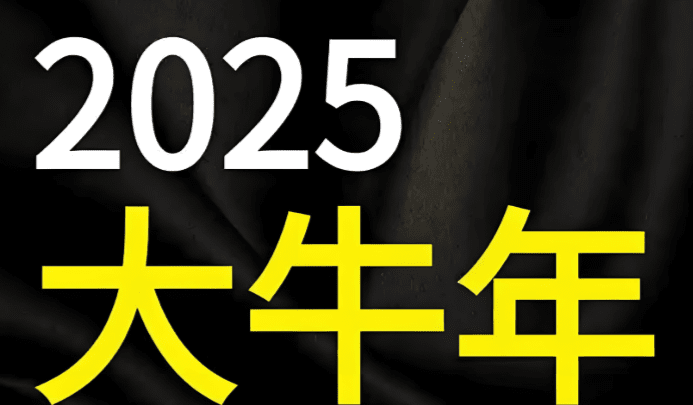
I am Mu Qing, and my journey in currency speculation is divided into these stages
One: 8,000 entered the currency circle, caught up with the bull market, and earned more than 10 million
II: 10 million+ to 8 million in debt
Three: From entering the market with 200,000 to 20 million
4: From 20 million+ to 2+ small suns currently
5: In progress, the goal is to wait for the next bull to arrive at 10 small suns
Too long, please read patiently, I believe it will be very helpful for your investment journey in the currency circle!
You may question what I say, but it doesn't matter. The reason I came to Zhihu is simple: sharing my own things can really help some people and some families, which is worth it! It doesn't matter if you spray, as long as you know how to make money in the currency circle.
Let me share my views: Insights into 2025, encountering a crazy bull market

The success of the blockchain industry does not lie in the success of a single technology or platform, but in the inevitable product of the history of world financial development. This is the demand of the era of financial development and innovation, and the best testimony to financial globalization!
Bitcoin is rising as the world's largest dollar-denominated financial asset, becoming a key tool to hedge against the US fiscal deficit and the US debt crisis. In 2024, in the wave of drastic changes in the global financial landscape, the crypto industry has experienced profound ups and downs and restructuring. Bitcoin announced its core position in the global asset system with a historical high of 100,000 US dollars, and successfully entered the top seven assets by global market value.
It is also the beginning of structural change: a US dollar liquidity loop chain with Bitcoin as the core asset, ETFs and US stocks as the capital bridge, and US stock listed companies as the carrier has been formed. This financial change not only shaped a new asset value system, but also injected lasting growth momentum into the blockchain industry.
Encounter One: Compliance - making the industry more standardized
After Trump successfully wins the election, the (Bitcoin Bill of Rights) is officially passed! And Trump officially started the crypto-governance mode! Let the legal and compliant status of Bitcoin in the United States be further enhanced. After Trump officially takes office on January 25, he will definitely further promote cryptocurrency. At the same time, many countries around the world have also changed from banning to revoking the ban and defaulting to permission after Trump took office! In 2025, the compliance environment of the blockchain industry will usher in significant progress, laying a solid foundation for the healthy development of the industry.
Trump's promotion of cryptocurrency will be the biggest engine of this bull market: President-elect Trump supported cryptocurrency during his campaign, promising to establish a Bitcoin strategic reserve and reorganize the SEC. He also nominated Scott Bessent as Treasury Secretary, who once said "Cryptocurrency represents freedom, and the crypto economy will exist for a long time." At the same time, Bitcoin as a national strategic reserve currency and a large increase in holdings by institutions will definitely allow Bitcoin to have a higher price breakthrough in 2025.
Compliance innovation will emerge in the field of custody wallets, resolving the contradiction between self-custody and regulation. The integration of technology and compliance will reach a new height, improving the standards of the entire industry. The macro regulatory environment will tend to be positive, creating favorable conditions for the development of the industry. The British government plans to consult on the regulatory framework for stablecoins and crypto assets in early 2025, which shows that the global regulatory environment is moving towards a more clear and supportive direction. A national strategic Bitcoin reserve is also likely to become a reality in 2025. Currently, there are more than 60 listed companies holding Bitcoin as treasury reserve assets.
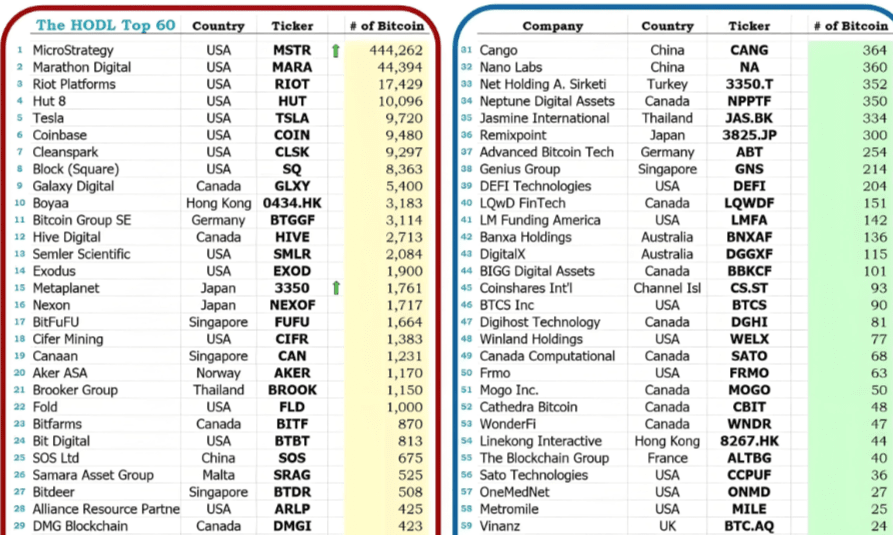
Encounter Two: RWA Track and Ethereum RWA
Will become the most explosive track
BlackRock CEO Larry Fink has changed from a former Bitcoin skeptic to a firm supporter of tokenization, saying "Tokenization of securities will be the next generation form of the market." These words from the head of the world's largest asset management company are of great significance. On-chain securities grew by 61% in 2024
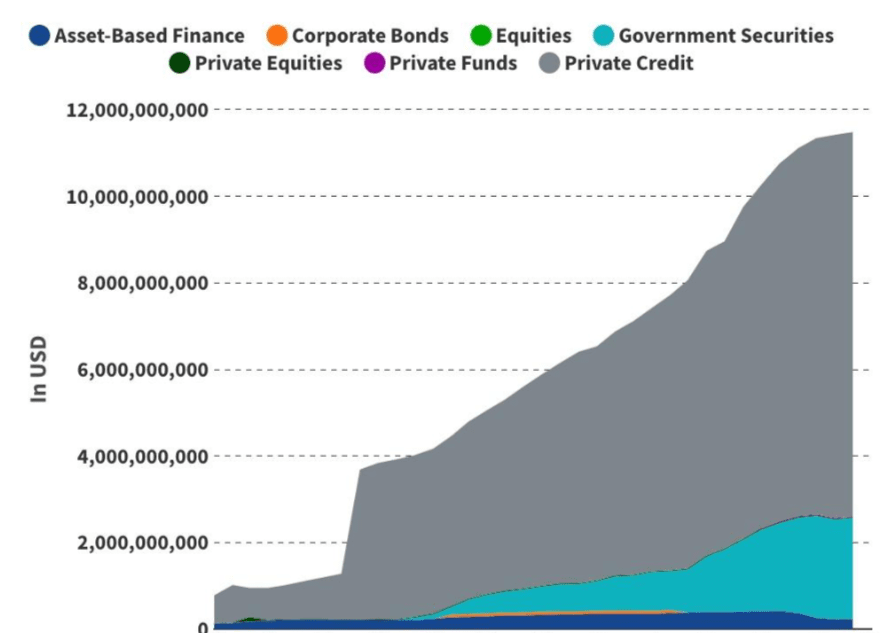
By 2025, the tokenized RWA market is projected to reach $50 billion and has the potential to grow exponentially from there. Venture capital firm ParaFi recently predicted that the tokenized RWA market could grow to $2 trillion by the 2030s, while the Global Financial Markets Association predicts it could reach $16 trillion.
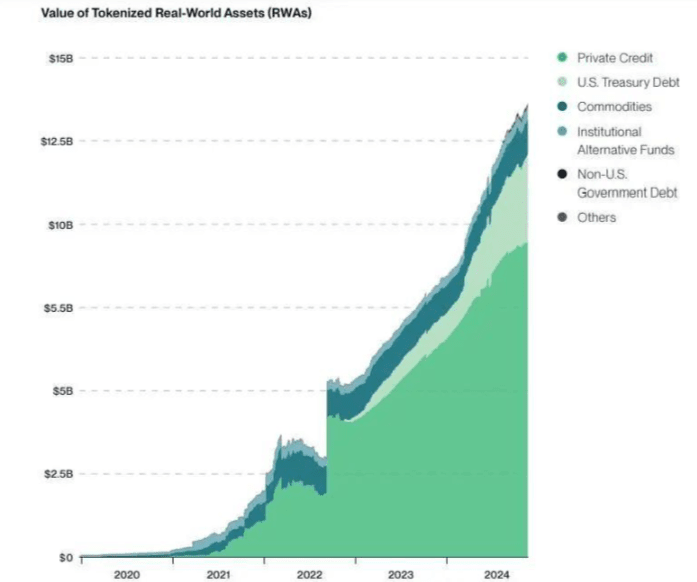
The Ethereum ecosystem is ushering in a new round of leap forward. The improvement of network performance, the technological innovation of the second layer, the expansion of the ecosystem, and the outbreak of the RWA market complement each other, which will promote Ethereum to a new height. As more and more real-world assets are tokenized and migrated to the chain, Ethereum not only consolidates its leading position as a decentralized application and smart contract platform, but also plays a key role in connecting traditional finance and decentralized finance. As of the end of 2024, the total market value of on-chain tokenized assets has exceeded 14 billion US dollars, and Ethereum accounts for nearly 80% of the market share, becoming the core driving force for the development of this field.
The rise of tokenized assets. Traditional financial giants are accelerating the embrace of tokenized financial assets, and Ethereum has become the preferred underlying infrastructure platform for institutions with its mature technical architecture, security, decentralization, and stability.
Through its smart contract platform and distributed validator network, Ethereum not only provides stronger support for RWA applications, but also provides a safe, efficient, and transparent migration path for traditional financial assets. Tokenized assets can achieve faster and lower-cost transactions and settlements on the chain, thereby significantly improving the operational efficiency of the financial market.
The impact of the Ethereum economic model. The expansion of RWA is not only the expansion of the ecological scale, but also injects new impetus into the Ethereum economic model. According to market data predictions, the fees brought by RWA-related on-chain activities are expected to exceed 100 billion US dollars per year, which is 40 times the current annual revenue of Ethereum.
Policy and market drivers. Further clarification of regulations will provide strong support for the rapid expansion of RWA. The US Securities and Exchange Commission (SEC) is expected to take a more crypto-friendly stance in 2025. In addition, regions such as Singapore and Europe are also actively promoting the regulatory framework for tokenized financial assets, injecting more compliance and transparency into the market, and removing obstacles for institutional capital to enter the RWA field.
Encounter Three: AI redefines the blockchain track
First: AI Agent will become an important player in the market
Participating in asset creation, asset issuance, and asset trading. With the rapid development of super-large-scale language models (XLLMs) and multi-modal models (XLMMs), new AI agents (AI Agents) will gradually become important players in the market. They will become the main participants in the blockchain world, with the ability to make autonomous decisions and actions.
AI agents have high adaptability, clear goal setting, and self-correction capabilities, and can make independent decisions in complex environments. This transformation indicates that AI agents will play a more important role in markets and social platforms, similar to the emergence of Eliza's AI agent framework, combined with Agent platforms like Myshell, will promote the development of this trend.
Second: On-chain activity of AI agents exceeds 1 million
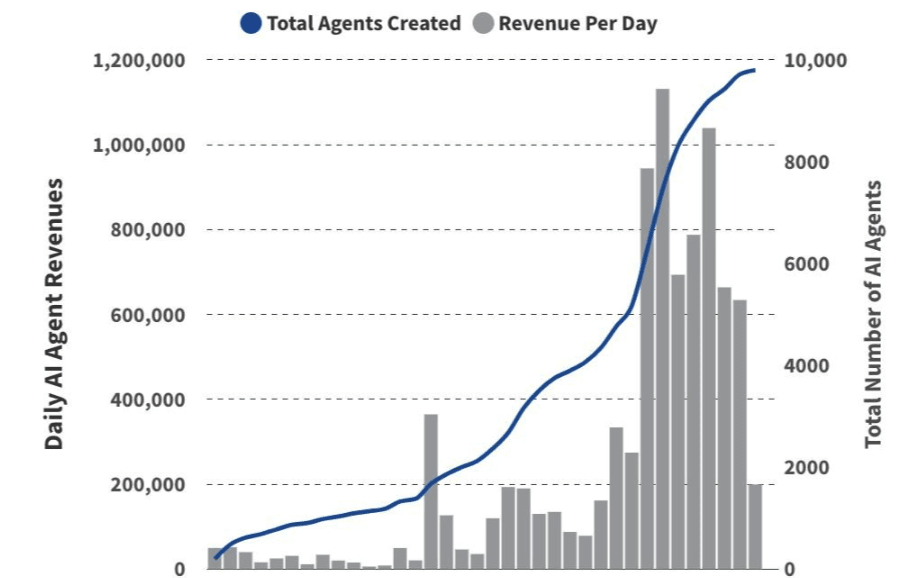
AI agents will be one of the most compelling narratives driving mass adoption in 2025. Designed to help users achieve specific goals, such as 'maximizing returns' or 'boosting X/Twitter engagement'. These agents are able to autonomously adjust strategies to optimize results, often trained and specialized on domain-specific data.
The development of AI agents is mainly concentrated in the DeFi field, but we believe that its application will go beyond financial activities. Agents can serve as social media influencers, computer players in games, and interactive companions or assistants in consumer applications. Given the huge potential of AI agents, we expect that more than 1 million new AI agents will be born by 2025.
Third: AI helps solve security problems.
The verifiability of blockchain can indeed be an important solution to solve AI security problems. Establishing a mechanism for 'Proof of Human Identity' is particularly important to ensure interactions between users and real individuals. 61% of organizations reported an increase in deepfake attacks in the past year, and this is expected to increase by 50% to 60% in the future. The complexity of AI security problems is mainly reflected in two points: dynamic attack vectors and prompt injection vulnerabilities.
Blockchain projects, with their decentralized and tamper-proof characteristics, can effectively address these challenges:
1. Data tracking and source verification: Blockchain can record and track data sources, ensure the authenticity of content generation through encrypted signatures, combat AI-generated deepfakes and fake news, and ensure data transparency and traceability.
2. Protect training data: Protect the data sets required for AI model training, prevent tampering or attacks, thereby ensuring data integrity and security, and reducing the risk of single points of failure.
3. Record and monitor AI model usage: Prevent unauthorized abuse, share models or data on secure platforms without worrying about information leakage or tampering. Users can audit and verify AI behavior, thereby increasing trust.
Fourth: AI penetrates existing track projects and changes industry paradigms
In 2025, the in-depth application of AI technology will significantly change multiple industries, including games, NFTs, DeFi, and social networking.
The gaming industry is likely to be the most impacted by AI. Global AI spending in games is projected to reach approximately $1.1 billion by 2025, indicating the industry's emphasis on the potential of AI. including:
1) Generative design: Generate game content through algorithms to improve development efficiency.
2) Personalized experience: AI will analyze player behavior and provide customized game suggestions and challenges.
3) Enhance interactivity: Intelligent NPCs will be more realistic and enhance the immersion of the game.
4) More intelligent AI agents improve the way game players participate in the game and reduce the experience burden of game players themselves;
Social projects have also ushered in many innovations. AI not only plays an important role in content generation and community interaction, but also promotes the innovation of tokenized and decentralized economic models. In the future, AI will:
1) Realize social monetization: Users can obtain crypto rewards through content creation and interaction.
2) Build a community economy: Using blockchain technology, users can directly participate in platform governance and profit distribution.
3) Improve security: Protect user privacy through decentralized identity verification.
DeFi benefits from the efficiency improvements and interactive model changes brought by AI.
1) AI agents will become important participants in the DeFi ecosystem.
2) AI-driven investment platforms and trading tools can also lower the barriers to user participation.
3) AI-assisted security will play a key role in smart contract vulnerability detection and optimization.
Encounter Four: Bitcoin price and ecological technology
Will reach new heights in the first quarter
In the previous article, we analyzed in detail that in the first quarter of 2025, the price of Bitcoin will reach a new high, probably around 150,000 US dollars. The price surge will definitely attract more funds and technology, so the development of Bitcoin ecological technology will also reach a new high.
Data One: Bitcoin Layer-2 Total Value Locked (TVL) reaches 100,000 BTC
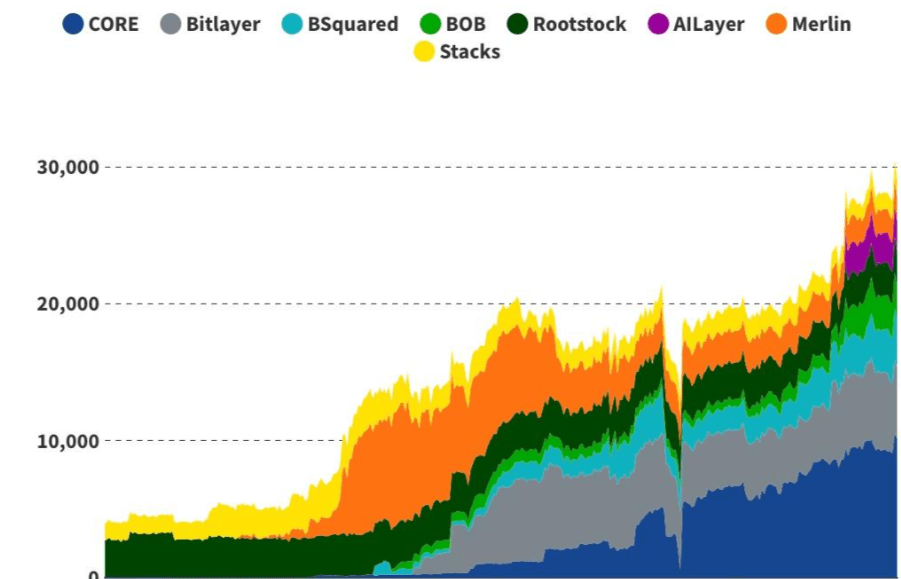
Bitcoin L2 locked value reached 30,000 BTC in 2024, a 600% increase year-to-date. We are closely monitoring the rise of Bitcoin Layer-2 (L2) blockchains, which have great potential in transforming the Bitcoin ecosystem. By expanding Bitcoin's functionality, these L2 solutions can achieve lower latency and higher transaction throughput, thereby addressing the limitations of the underlying blockchain.
Bitcoin can be transferred to smart contract platforms through bridging or wrapping, but these methods rely on third-party systems and are vulnerable to hacking and security vulnerabilities. Bitcoin L2 solutions aim to address these risks through frameworks directly integrated with the Bitcoin underlying layer, reducing reliance on centralized intermediaries.
In fact, the most important point here is that the speculation space of the Bitcoin ecosystem is very large. Currently, except for Ordi, there are no high-quality projects, so there is a lot of space here.
Data Two: BTC Layer 2 welcomes BTC's DeFi Summer
Looking ahead to 2025, the Bitcoin ecosystem TVL and DeFi activity will usher in breakthroughs. As of October 2024, Babylon has locked more than 57,288 Bitcoins, with a total value of 6 billion US dollars.
The Bitcoin DeFi field will see richer and more diverse application scenarios. It is expected that by 2025, the trading volume of Bitcoin DEX may exceed 4 trillion US dollars, accounting for 20% of the spot trading volume of centralized exchanges.
The Bitcoin ecosystem in 2025 will present a more diversified and interconnected appearance. From infrastructure to application-level innovation, it will promote Bitcoin from a simple store of value to an all-round financial infrastructure, providing users with richer and more efficient financial service options.
Data Three: Innovation of Bitcoin Ecological Technology
First: On the technical level, the expansion of the Bitcoin script language is an important direction. Lightning Network, as Bitcoin's second-layer scaling solution, is expected to usher in an important upgrade in 2025. The introduction of channel factories may allow batch creation of payment channels, which will greatly reduce the opening cost.
Second: Enhanced privacy is another important direction that the Bitcoin community has been actively researching. Now the addresses of many giant whales are easily tracked. In fact, there is a problem here: the real big players do not want others to see their movements, so coin mixing technology may be well applied in the Bitcoin ecosystem in 2025. Improving transaction privacy without sacrificing auditability is the key to future development. This may bring revolutionary privacy protection capabilities to Bitcoin.
Third: At the application level, the Bitcoin network is spawning diversified innovative applications. These applications integrate technologies such as micropayments, decentralized identity, content storage, Ordinals, and RGB protocols, which not only bring new business models to social media and the gaming industry, but also improve the transparency and credibility of scientific research through transparent fund management, data integrity protection, and decentralized evaluation mechanisms.
Encounter Five: Ethereum ecological technology breakthrough
SUI and SOL followed closely.
First: Ethereum Data Shard (Blob Space) generates $1 billion in fees, daily Ethereum data shard releases
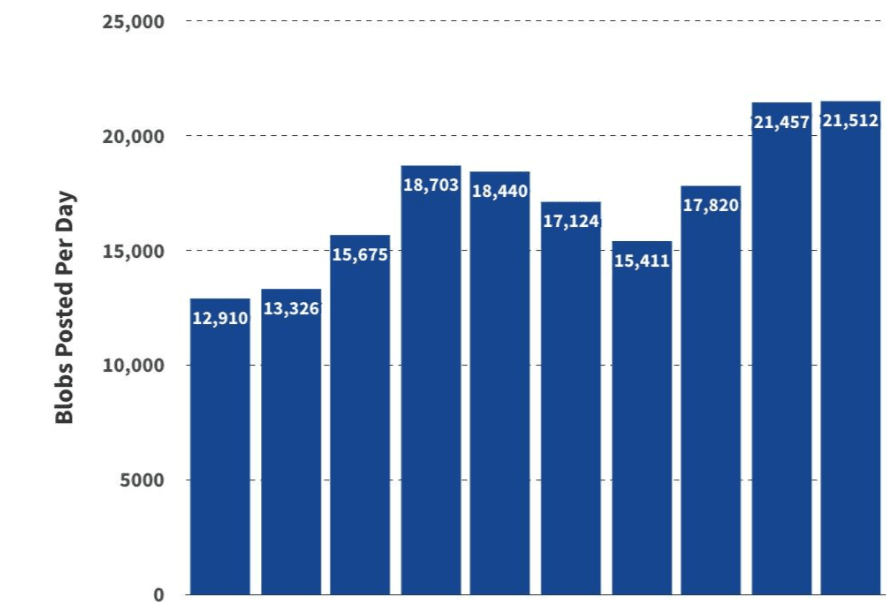
The Ethereum community is actively discussing its ability to derive value through Layer-2 (L2) network's Data Shards (Blob Space), a crucial component of its expansion roadmap. While this architecture supports Ethereum's scalability, L2s currently provide low value returns to the mainnet, with gross margins around 90%. This raises concerns that Ethereum's economic value might be excessively shifting to L2s, leading to underutilization of the underlying network.
But its usage is predicted to greatly expand by 2025, driven by three main factors:
1. Explosive Adoption of L2:
2. Rollup Technology Optimization
3. Introduction of high handling fee scenarios
Second: Ethereum ecological technology and ecological double breakthrough
In 2025, the Ethereum ecosystem is expected to experience significant development, with significant breakthroughs in both technology and ecology. In terms of expansion, the number of L2 and L3 solutions is expected to exceed 2,000, and Ethereum can truly achieve 200x expansion. After the Pectra upgrade, the increase in blob capacity will further reduce the cost of rollup and drive daily transaction volume to exceed 100 million. These improvements will provide the Ethereum network with stronger processing power and lay the foundation for supporting large-scale users.
The popularization of account abstraction technology will also be an important progress. The implementation of EIP-3074 and EIP-7702 makes more than 25% of on-chain transactions use account abstraction methods, and users can use any token to pay gas fees. After EIP-5003 realizes complete account abstraction, it will change the way users interact with smart contracts.
In terms of pledge mechanism optimization, EIP-7251 allows validators to pledge more than 32 ETH to obtain additional income. At the same time, unlicensed pledge pools are realized through EIP-6110 and EIP-7002, so that the total amount of Ethereum pledges is expected to exceed 30 million, and the annualized income is stable between 3%-4%.
In terms of network efficiency, through Verkle Trees, EOF optimization, and PeerDAS improvements in the Amsterdam upgrade, the storage burden on Ethereum validators will be reduced, and EVM execution efficiency will be improved. Network throughput is expected to increase by more than 10 times. These technical updates will significantly enhance Ethereum's performance and support the development of future modular blockchain architectures.
Ecosystem integration will also be an important direction in 2025. Native interoperability ZK stacks have become standard for new rollups, and efficient validity proof clusters are gradually forming. These improvements lay the foundation for modular blockchain networks and promote Ethereum's transformation from technology-driven to application-driven.
The Beam Chain upgrade will bring significant changes to the Ethereum consensus layer, including shortening the block production time to 4 seconds, lowering the pledge threshold to 1 ETH, and introducing zero-knowledge proof technology. These changes not only improve network performance, but also enhance decentralization and provide more possibilities for future development.
Third: SUI and SOL continue to rise strongly
Solana is continuing to consolidate its leading position in the field of high-performance public chains with its technological advantages. By upgrading the Gulf Stream parallel processing technology, its TPS is expected to exceed 100,000 in 2025. At the same time, the application of state compression technology reduces the hardware threshold for verification nodes and reduces the cost burden by 30%.
The developer ecosystems of Solana and SUI are remarkable, with 2500-3000 active developers per month, and the developer three-month retention rate has increased from 31% to over 50%. In terms of technology stack, more than half of the developers have at least 3 years of blockchain development experience. This maturity ensures the production of higher-quality applications in the ecosystem.

Encounter Six: Bitcoin's Strategic Reserve and
The number of holdings countries will reach a historical high
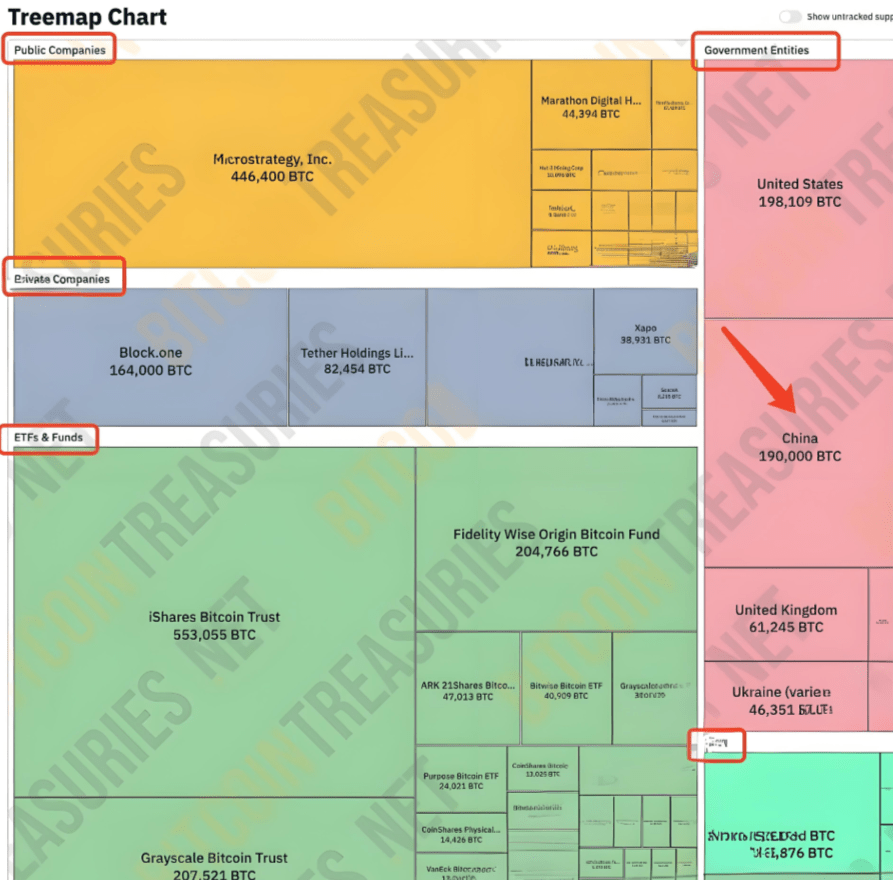
This picture respectively counts the holding ratio of Bitcoin from several dimensions, such as listed companies, ETF institutions, and countries. In 2025, especially for institutions such as MicroStrategy, BlackRock, and Fidelity, the number of holdings will increase by at least 50%.
At the national level: More countries will strategically reserve Bitcoin and improve laws and regulations. There is still uncertainty as to whether the United States will establish a Bitcoin strategic reserve in 2025. Although there are positive signals:
A Republican Senator from Wyoming has proposed a bill recommending that the US purchase 1 million Bitcoins within five years.
President Trump has expressed support for this proposal.
In terms of the global situation: the United States' consideration of establishing a Bitcoin strategic reserve currency has triggered more countries to follow suit, which will drive up the price of Bitcoin worldwide.
Legislators in countries like Poland and Brazil have also proposed bills to establish national Bitcoin strategic reserves
CZ also stated in a recent public occasion that China will establish a Bitcoin strategic reserve.
Russia, publicly supports the use of Bitcoin as payment for trade
The United Kingdom uses pensions to strategically reserve Bitcoin.
France has already included Bitcoin in its pension system in July 2024.
Japan, Singapore, etc., needless to say, are more supportive than China.
Countries publicly holding Bitcoin: This number is expected to double in 2025
According to statistics: Currently, nine countries in the world hold Bitcoin, with the United States leading the way
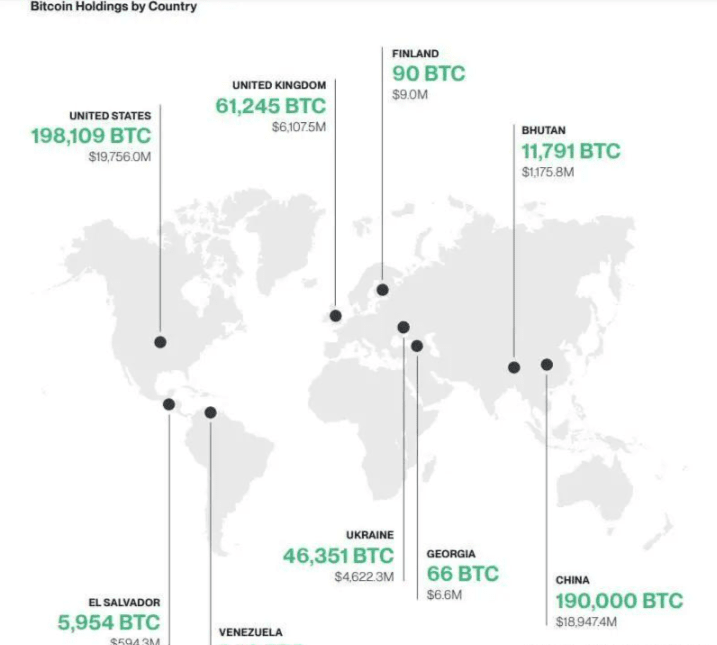
Encounter Seven: DeFi will create a new historical high
The NFT market will usher in a rebound
DeFi performed very well in the last bull market. In the 2020 to 2021 bull market, 61 out of the top 600 tokens by market value had more than 100x gains in the secondary market, and DeFi has the greatest potential in this round. There is never a shortage of hot topics and users!
DeFi sets a new high: In the last bull market, the total value locked (TVL) of DeFi has exceeded 185 billion US dollars. In this round, it will exceed at least 250 billion US dollars.
DeFi Total Value Locked (TVL) Trend

Decentralized exchange (DEX) trading volume will exceed 4 trillion US dollars
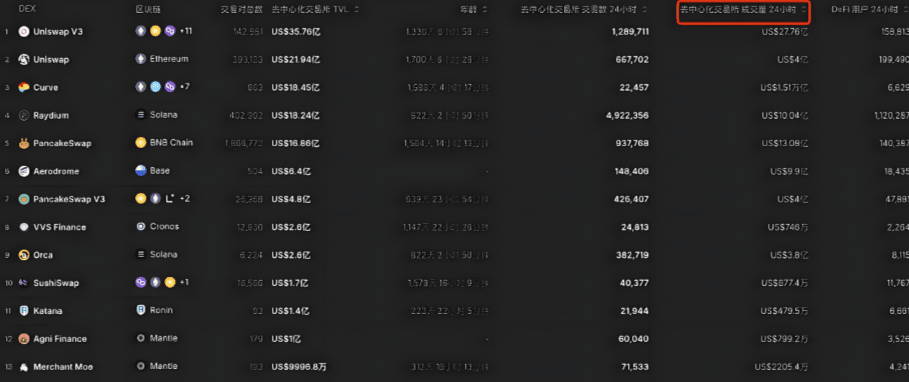
Securitization of tokens and the influx of high-value assets will further drive DeFi growth, injecting new liquidity into it and expanding its functionality. As the demand for decentralized financial infrastructure rises in the evolving digital economy, DeFi TVL is expected to rebound to over $250 billion by the end of 2025.
The NFT market will usher in a rebound, with a transaction volume of 30 billion US dollars
NFT transaction volume declined in 2024, expected to rebound in 2025
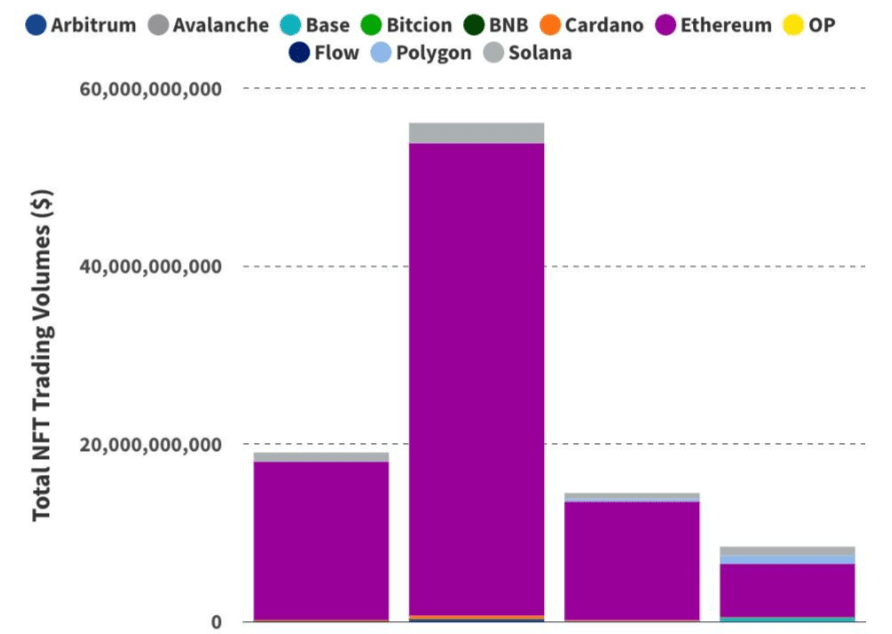
The 2022–2023 bear market severely impacted the NFT space, with transaction volume declining by 39% since 2023 and plummeting 84% compared to 2022. It began to rebound in 2024, but most NFTs lagged behind, with weak prices and low activity until a turning point in November.
With the recovery of crypto wealth, we anticipate that new users will diversify their investments into NFTs, not only as speculative assets but also as assets with lasting cultural and historical significance. Ethereum remains dominant in the NFT market, hosting the majority of significant series. In 2024, it held a 71% share of NFT transaction volume, which is expected to rise to 85% by 2025.
Encounter Eight: Stablecoin market value doubles
Decentralized Science (DeSci) leads new markets
As of the last day of 2024, the total market value of stablecoins has reached 210 billion US dollars. This data is likely to double in the second half of 2025, and the United States will pass the long-awaited stablecoin legislation.
Can grow at a high speed, I think there are at least the following reasons:
First: Legislation on stablecoins. The easiest goal for Washington's pro-cryptocurrency policymakers to achieve is through comprehensive stablecoin legislation. This will answer important questions, including who will regulate and what are the appropriate reserve requirements. Clear regulations will spark great interest from issuers, consumers, and businesses. Large traditional banks such as JPMorgan Chase are expected to enter this field.
Second: Global trade and remittances. I personally think this will be one of the important driving factors, because this is a more convenient financial currency payment method than the circulation of the US dollar, especially for companies that do bulk trade, this is the best and fastest way. Among them, the transaction volume of stablecoins in 2024 reached 8.3 trillion US dollars, close to Visa's payment volume of 9.9 trillion US dollars in the same period.
Third: The crazy bull market will bring more retail investors, institutions, and smart wallets to the market to get a share, so a large amount of funds will pour in. At this time, the market demand for stablecoins will increase. Also, many existing large currency holders hold coins for a long time and do not move, which reduces the liquidity of BTC to a certain extent. The market demand for USDT will also increase.
Decentralized Science (DeSci) reshapes scientific research funding, collaboration, and intellectual property management through blockchain technology and tokenization mechanisms, injecting new vitality into the scientific research economy.
The core innovation of DeSci lies in funding allocation and intellectual property management. IP-NFT not only provides legal protection for scientific research results, but also allows researchers, communities, and investors to jointly participate in funding and profit distribution.
In the field of medical data, DeSci projects also show great potential. AminoChain developed a decentralized biobank market through a $5 million financing, helping patients control the right to use data and benefit from it, while reducing the cost of sample acquisition for research institutions.
In terms of scientific research publishing, ResearchHub completed 2,800 peer reviews through token rewards, reducing the average turnaround time to 9 days, which is far better than the 70-98 days of traditional journals, significantly improving scientific research transparency and efficiency.
Decentralized Science (DeSci) realizes community-driven scientific research funding through governance tokens, reduces intermediate links, and reduces fund waste. With the gradual clarification of the policy environment and the increase in institutional participation, the scale of on-chain scientific research funding is expected to further expand, and promote the further development of intellectual property commercialization, open publishing, and medical data management.
The rise of decentralized science is driving scientific research from closed to open, and from centralized to democratic. DeSci's transparent mechanism, efficient collaboration, and data sharing model will have a profound impact on global scientific research innovation.
Giving roses to others leaves fragrance in your hand. Thank you for your likes and attention. I wish you all financial freedom in 2025!